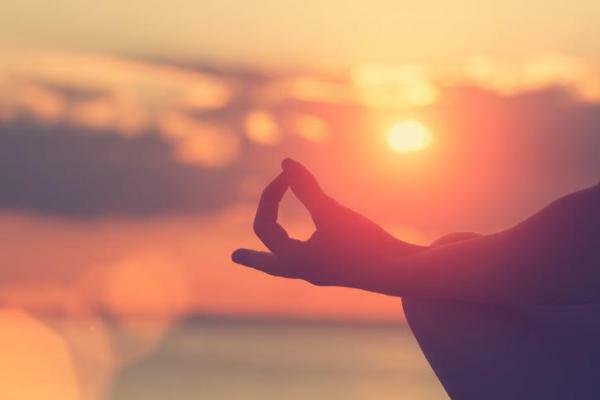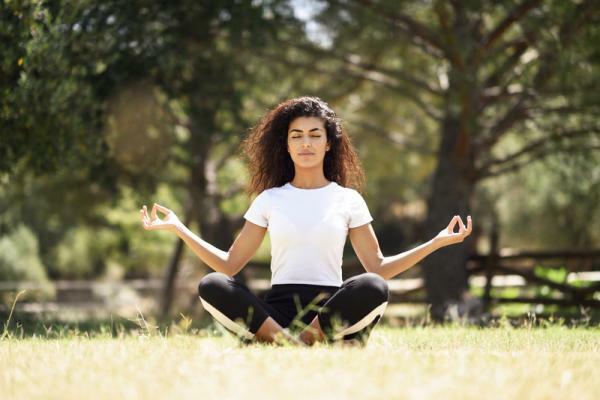
We will use total or partial Progressive Muscle Relaxation to learn to control the muscles of our body that with its inappropriate use they cause vasoconstriction and consequently a deficit in the supply of oxygen in addition to a great tension in our entire organism.
This technique like the relaxation through breathing, we will not only use it in the clinical field but also in our daily lives, which will allow us achieve self-control in the face of different stressful situations as well as a greater control over ourselves themselves.
Index
- Goal of progressive muscle relaxation
- Muscle groups that we will work
- Progressive muscle relaxation exercises: hands, arms and forearms
- Progressive muscle relaxation exercises: shoulders and neck
- Progressive muscle relaxation exercises: forehead, eyebrows and eyes
- Progressive muscle relaxation exercises: tongue, jaw and lips
- Progressive muscle relaxation exercises: chest and stomach
- Progressive muscle relaxation exercises: buttocks and legs
- Progressive muscle relaxation technique for weeks
Goal of progressive muscle relaxation.
- Learn relaxation skills that can be applied quickly and in practically any situation. That is, the training consists of learning to RELAX, so that in the situations in which we notice that we are putting excessively tense, nervous or restless, we are able to reduce and control the situation, as well as our own physical state and mental.
- Learning to relax is similar to learning any other type of skills, such as: writing, reading, swimming, driving, cycling, etc... At the beginning everything is slow, complicated and deliberate with scarce results and a multitude of errors, but with PRACTICE, we will be able to relax quickly and in the most diverse situations. WITHOUT REGULAR PRACTICE, THE PROCEDURE WILL NOT WORK. On the other hand, the more we practice the better results and the greater control we will achieve.
The goal
It consists in being able to relax in 30-60 sec., And in using this ability to control both the confrontations to various situations such as anxiety and the excessive somatic reactions that accompany it, thereby influencing the three systems response.
How are we going to get it?
- Learning to recognize and relax the muscular tension of our entire body.
- At the beginning practicing daily at home and once we learn the technique practicing it anywhere and the more times the better.
- Applying relaxation to events in our daily life and to various situations.
- Making it a habit that is part of our daily repertoire.
Initial conditions to learn it
- Especially in the first sessions, the environment where the relaxation is to take place should be calm, with a pleasant temperature, free from distractions and noise, lights semi-off ...
- Ideally we will do it on a comfortable sofa, armchair or bed where we have enough support for the back, head, neck and we can comfortably stretch our legs.
- As for clothing, it must be comfortable and detach ourselves from any clothing that oppresses us too much.
- At the beginning and until we learn it, it will be important to do it every day, preferably with our eyes closed to allow greater concentration, until little by little we master it.

Muscle groups that we will work.
The first step is to read through the exercise until you are familiar with the methods and muscle groups that we are going to try to relax (see attached table). At first, it can be a bit complicated but little by little we will have mastered the whole procedure quite easily. If we group the areas that we are going to work on, it will be easier for us to remember it. It is about starting with the hands and moving forward until finishing with the legs.
The procedure is very simple. Is about focus our attention on each of the muscles with which we are working at all times, we can do it following the order established in the image box.
We tense each part first and then immediately try to relax (we spend very little time tense, just enough to detect physical signs of tension, and we spend more time to perceive the difference that we experience as we try to reduce the tension, until little by little we are able to clearly discriminate the effects of the relaxation). It will not take long to see the difference between tension and relaxation. It is important to concentrate on the act of unfolding the muscles without applying any type of tension or generating any resistance. Even when we think that the muscles are already relaxed, we should try to relax them even a little more. Let's try to feel how the muscles are getting heavier and heavier. It is possible that we feel tingling or a certain heaviness or cold sensation, palpitations in certain areas of our body... this is normal and important as it is part of the relaxation process.
When we carry out the breathing exercises to tighten and relax the chest muscles (inhaling slowly through the nose, holding and expelling also slowly through the mouth), we can see how inspiration produces tension and expiration relaxation, hence we try with the expiration to get more and more relaxation. In this phase, it is very important to associate exhalation with relaxation.
Once we have relaxed all the muscle groups, we will try to remain as calm and relaxed as possible, doing a general tour of the whole body to try to relax a little more any area that we can detect with some tension. This is when we will try to create a mental image, in which we see ourselves within a quiet, soft and extremely peaceful and pleasant scene. It can be a calm country landscape, a plain full of wild flowers, a warm and deserted beach, or the image of the sea with gentle waves slowly approaching the shore... We can use any image that helps us feel in conditions of maximum emotional satisfaction. At first it may be difficult to hold this mental scene for more than a few seconds, but with practice It will become increasingly easy to use these types of images to increase the feeling of well-being and relaxation.

Progressive muscle relaxation exercises: hands, arms and forearms.
Cuffs
We clench our fists as hard as we can for five seconds to feel the tension that this produces in us. Then we completely relax and try to tell the difference between what was tension and what is relaxation. We try to focus all our attention on deploying the muscles for about a minute.
Front of the arms
Now we bend our arms at the elbows to tighten the muscles in the front part of the arms. We maintain this position for about five seconds and then we relax and let our arms hang along our body. We continue to deploy our muscles and focus on the feeling of letting go for a minute or so.
Back of arms
On this occasion, we must extend our arms as rigidly as we can. We feel the tension in the back of the arms for about five seconds and then we relax. During relaxation we extend our arms along our body and let the muscles relax. deploy and fall with all their weight as much as possible without exerting any pressure, for approximately one minute. Once we are done with this group, we use extra time and focus on all the muscles hands and arms, letting them relax until they feel more and more deeply relaxed.

Progressive muscle relaxation exercises: shoulders and neck.
Shoulders
We shrug our shoulders, raising them towards the nape as much as we can while we feel the tension in them. We hold that same position for about five seconds and then we release and relax. We let the shoulders drop with all their weight and unfold. We maintain that feeling of letting ourselves go for a while until we perceive feelings of relaxation.
Nape
We can tense these muscles by pressing the back of the head against the back of the chair, sofa or bed, as hard as we can, for about five seconds. We feel the tension, we concentrate on it and then we relax the nape of the neck until we feel how our head rests gently and relaxed, without exerting any tension on it. We focus on the feeling of letting ourselves go and perceive the feelings of relaxation that little by little are emerging.
Afterwards, we let the muscle groups of the neck, shoulders and arms relax as much as possible.
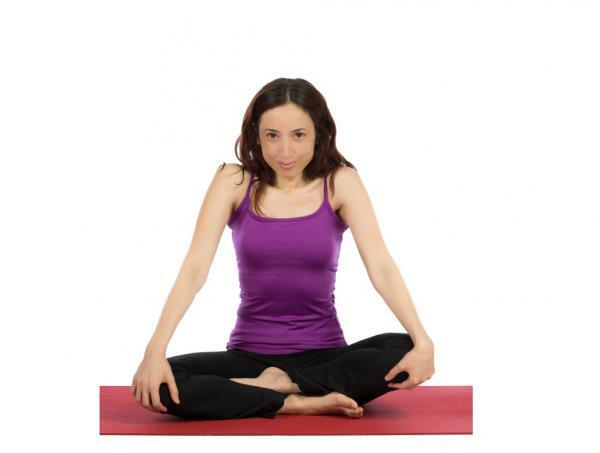
Progressive muscle relaxation exercises: forehead, eyebrows and eyes.
Forehead and scalp
Let's put these muscles in tension by raising the eyebrows with force. Let's try to raise the eyebrows exerting as much tension as we can and hold that same position for about five seconds. Feel the tension generated and then relax. Let's try to feel the difference between tension-relaxation and keep the feeling of letting go, without exerting any pressure but everything. On the contrary, trying to unfold and unfold the muscles as much as we can while keeping our eyes still, closed or looking softly and directly at in front of.
Eyes and brow
Let's put them in tension by frowning them as tightly as we can while closing our eyes tightly. Let's maintain that same position of tension for about five seconds and then relax. Let us feel the relief that letting ourselves be carried away and continue to soften the fall of the eyebrows while trying to perceive the sensations that little by little are emerging. For the next minute let's just focus on these muscles.
Then, for another minute, let the muscles around the eyes, in the forehead, in the neck, in the shoulders and in the arms relax completely.
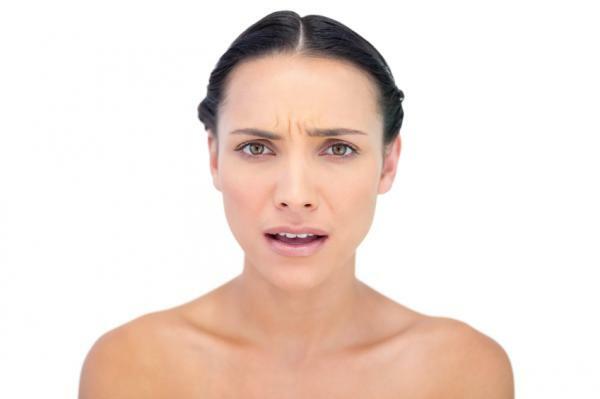
Progressive muscle relaxation exercises: tongue, jaw and lips.
Language
These muscles can be tensed by placing the tip of the tongue on the upper palate and pressing up. as hard as we can, to feel the tension in the muscles of the tongue and neck for about five seconds. Later we feel the sensation of letting ourselves go and let the tongue fall under its own weight and sink into the back of the mouth. Let's keep the feeling of relaxation for about a minute. Let's do the same but, this time, against the lower palate.
Mandible
It can be tightened by clenching your teeth for five seconds. Let's feel that tension in the jaw and then relax the muscles. Finally, let's slightly separate the teeth, so that there is no tension on the jaw and we can feel the relief of being carried away for the next minute and try to perceive the sensations that go emerging.
Lips
The muscles of the lips and face can be tightened by pressing one lip against the other. We hold that position for five seconds and then relax. To do this, let the lips rest together and slightly parted and continue to feel the sensation of letting ourselves go for about a minute.

Progressive muscle relaxation exercises: chest and stomach.
Chest
We will do it in two phases:
- Pulmonary respiration: we take a slow and deep inspiration to bring the air into the upper part of the lungs (the chest rises), we hold our breath for about five seconds and We try to perceive the tension that is produced in the chest, then we slowly expel the air, concentrating on the sensations that arise as the chest unfolds and let us wear. Then we take another deep breath. We feel again the tension in the chest. We hold our breath for a few seconds, expel the air little by little and feel the relaxation. Every time we expel the air, we feel the relief that we notice when we release the air and let ourselves go. Let's continue practicing this exercise for the next minute while concentrating on the feelings of relaxation.
- Diaphragmatic breathing: we breathe in slowly through the nose until we bring the air to the lower part of the lungs (the belly rises) we hold our breath for about five seconds and feel the tension that occurs in the abdomen, then we slowly expel the air, concentrating on the sensations that arise as the ventral area unfolds and gradually relaxing. Then we take another deep breath. We feel again the tension in the abdomen. We hold our breath for a few seconds, we expel the air little by little and feel how we are relaxing. Every time we expel the air we notice the relief we feel when we let go of the air and let ourselves go without offering any resistance. We continue to practice this exercise for the next minute while concentrating on the sensations of relaxation.
Stomach
We shrink the muscles around the stomach area as if we were preparing to receive a blow. We feel the tension that builds up as we keep our muscles tight and rigid. We hold this position for about five seconds. Then we relax and let the stomach muscles drop, relaxing them as much as we can. Let's continue feeling the sensations that arise as we gradually relax and let ourselves go.
And now, before moving on to the next group, we concentrate on relaxing all the muscles of the trunk, neck, face, arms and hands.
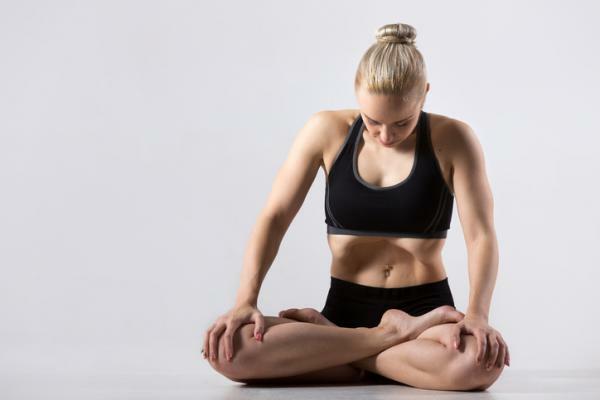
Progressive muscle relaxation exercises: buttocks and legs.
Buttocks and legs
We tighten by squeezing the thighs and buttocks, extending the legs forwards with force and directing the toes downwards. We hold that same position for five seconds. We feel the tension in our legs and buttocks and then we relax completely. We feel how the tension is gradually disappearing from our legs and our buttocks. Let's continue letting ourselves go, relaxing, unfolding our muscles as much as we can and perceiving those sensations that little by little will appear.
Whole body
For the next two or three minutes let us concentrate all our attention on relaxing all the large muscles, we no longer tense, we just relax. We feel how we are sinking deeper and deeper into the bed, sofa or armchair while our body becomes more and more heavy and relaxes more and more deeply. Let's keep that feeling in mind as vividly as possible, enjoy it, perceive those pleasant sensations that arise, let us feel how we are relaxing more and more and more. During this period we keep our eyes closed and try to see in our mind the image that previously we have selected until we get to condition it in such a way that just by thinking about it we relax. After a few minutes, we open our eyes and slowly move our body again until we acquire a normal muscle tone. Never get up abruptly, as we could get dizzy, but do it when we have acquired an activation muscle tone. Once purchased we can get up and resume our daily routine.
With this, the exercises are finished. It will be essential to practice the more times the better until you fully master the technique. The benefits that we get with it will compensate all the efforts invested in its learning. Once the technique is learned, we can use it in a fast and differentiated way.

Progressive muscle relaxation technique for weeks.
First two weeks
We will practice the exercises, in each of the muscle groups, every day. First we tense and later we relax (if we can three times a day better than two, the best moments of the day: when we get up in the morning, at noon and the last thing we do in the night). We will do this by combining it with the TWO BREATHING TECHNIQUES (applied relaxation and relaxation by breathing), which will take us approximately 30-45 minutes. Voluntary deep breathing keeps the person physically active, intellectually playful, and helps balance and control emotions.
It may seem strange that if we want to achieve RELAXATION, LET US START TENSIONING FIRST but we must remember something very Importantly, it is much easier to learn to differentiate something when we intentionally provoke it than when it occurs unconsciously. In addition, always after a great muscular tension, relaxation occurs automatically and as a self-recovery mechanism. For this reason, let us learn to detect the first signs, to control them and to put the necessary means to discriminate what to do, when and how. do it until you achieve something as important as learning to be as relaxed as possible before any event, both internally and external.
Third and fourth week
Based on the progress we make, we will reduce the time spent relaxing.
We will spend about 30-45 minutes trying to do it in about 15-20 always combining the initial muscle groups with the image that is tremendously relaxing for us (once relaxed, we will each generate our own image, which we will try to be a very pleasant and relaxed situation as eg. the image of lying on the beach feeling the sea breeze, the heat of the sand, listening to the sound of the waves or seagulls ...).
During these weeks we will also practice the "Quick Relaxation." We tense the whole body and relax quickly, concentrating as much as we can and trying to achieve maximum relaxation. We will practice this standing, sitting or walking.
When this "Rapid Relaxation" has been overcome, we will try to relax the whole body without going through the phase of tension, we will try to go directly to relaxation but without putting the muscles previously in tension. We will try to abandon our body, releasing all tension, feeling the heaviness of the body abandoned to its weight, Let's learn to detect those signals that tell us that we are relaxed, that our blood circulates through our body, that we feel his step... Let's do it sitting, standing, walking, doing various activities... Let's try to see how little by little we are controlling and perceiving what happens in our body.
Fifth and sixth week
Once the previous phase has been mastered, we will practice relaxation associating it with a reassuring word, (such as for example. "calm", "relax" or "calm / or" ...) and combining all this with the activities that we are carrying out at that moment. By establishing this association (word with relaxation and activity) we will achieve learn to be relaxed in no time while we carry out various activities: sitting, standing, walking, driving, working, etc ...
Seventh week and beyond
We will practice the quick relaxation many times a day in non-stressful situations, to test our learning and learn to master the technique a little better each time. Finally, we will be in optimal conditions to start applying relaxation in situations that generate us tension or anxiety starting with the less complicated situations, until little by little we get the maximum control.

This article is merely informative, in Psychology-Online we do not have the power to make a diagnosis or recommend a treatment. We invite you to go to a psychologist to treat your particular case.
If you want to read more articles similar to Progressive muscle relaxation technique - steps and exercises, we recommend that you enter our category of Meditation and relaxation.
